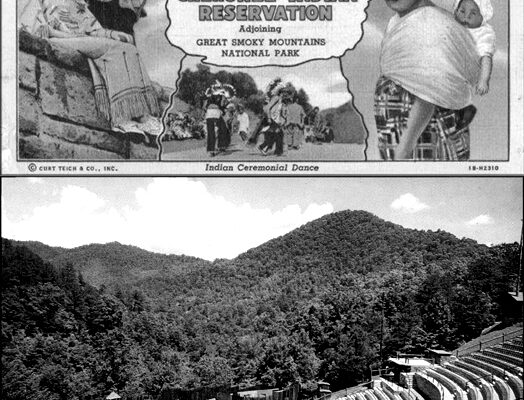Dr. Frans M. Olbrechts (1889-1958), a Belgian anthropologist with the Smithsonian Institute, became known for his work with seven Indian tribes, which included the Cherokees. Of particular interest was his documenting of atypical native American customs.
For instance, “Catch a green snake, hold it horizontally extended by the neck and tail, run it seven times back and forth between your two rows of teeth and then turn it loose. Eat no food prepared with salt for four days following this procedure.” The person was said to be protected from a toothache for the rest of his or her life (if they survived the trauma of the snake). The toothache theory, Dr. Olbrechts explained, was that a ghost transmutes the particles of food lodged about the teeth into worms, which then burrow into a tooth. Cures were supposedly effected by a phantom squirrel that pulled out the worms and carried them away.

Other examples of toothache prevention were “Whenever you see a shooting star, you must immediately spit or you will lose a tooth shortly afterwards. If you always heed this advice, you will keep all your teeth for as long as you live.” Also, you were never supposed to throw anything into a fire that had been chewed, such as a wad of tobacco or the skin of an apple, or the flames will “chew your teeth.” The method of preventing boils was to swallow the body of a living daddy-longlegs after first pulling off its legs.
Some of the prophylactic methods came from skunks and buzzards. “The odor of the skunk,” said Dr. Olbrechts,” “is believed to keep away contagious diseases. The scent bag is taken out and hung over the doorway, a small hole being pierced in it in order that the contents may ooze out over the timbers. At times of an epidemic, the entire body of the animal is hung over the door and as an additional safeguard, skunk oil is rubbed over the skin.”
Buzzard feathers frequently were hung over a doorway because this bird preys upon carcasses. It is supposed to be immune from ill effects caused by bad odors and able to communicate this trait to those who have its feathers.
Dreams and omens played a prominent part in Cherokee “medicine.” According to the doctor, anyone who dreams of birds will instantly become insane. Bees or wasps appearing in a dream are predictive of blindness, while dreaming of a burn indicates an impending snakebite. When one dreams of a ballgame, the complete burning of a cabin or of some relative leaving home, it means that some member of the settlement will soon pass away. A dream of a rushing bull or of a windstorm is prophetic of an impending epidemic.
Constant sickness was thought to be caused by malicious animal spirits and witches. The proper procedure was to find the responsible cause and then call upon some opposing force for help. If a disease is thought to be caused by worms, for example, various birds that are worm eaters are solicited to bring about a cure. Should the most striking feature of the disease be its obscurity, such a sly and wary creature as the otter is commanded to effect the cure.
The Indians have a considerable “materia medica” (a body of collected knowledge about the therapeutic properties of any substance used for healing). Olbrechts found the uses of plants were determined by their peculiarities of growth, rather than any real effectiveness.
For example, a shrub growing in the cavity of a hollow tree is used against “painful remembrance of the dead, because as it was explained by the medicine man, “when we tear away the roots stubbornly clinging to the tree, we will, when we drink a decoction or concentrate of the roots also be able to pull out of our minds the remembrance that makes us sick.” A boiled down mixture of ferns, therefore, will give the rheumatism patient the power to straighten out the rheumatic muscles of his or her limbs.
Dr. Olbrechts spent several months in Cherokee country gathering material to complete a study of the medical native lore. A report combining the work of him and James Moody, another Smithsonian pioneer of Indian medicine folklore, was issued in Nov. 1932 by the Smithsonian Institute.

Comments are closed.